I decided to drink two teas against each other today. I picked the 2004 Yangqing Hao sample that I got recently, and the 2005 Fuxing Zhangjiawan as a comparison. I thought the Zhangjiawan, while not from Yiwu area, tastes similar to one. i want to see how (relatively) similar it is, and also how it compares with a tea that is slightly older. Since the YQH was stored in Taiwan (albeit Southern Taiwan), I figured it’s a closer match than anything else I’ve got at this point.
I took some pictures of the dry leaves, but then realized that they were poor quality, and that they don’t look any different — not discernable through a camera anyway. Just remember — left cup is YQH, right cup is Fuxing 🙂
Here are infusions 1, 4, 7, and 10
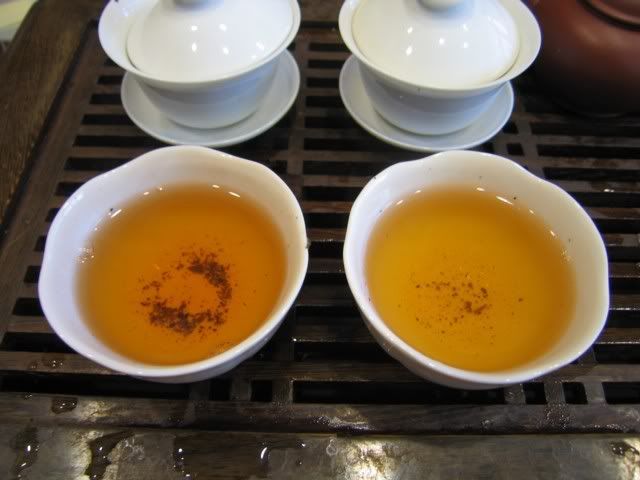

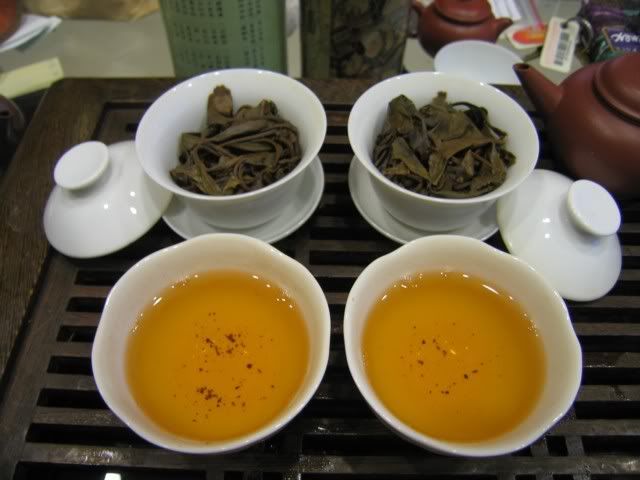
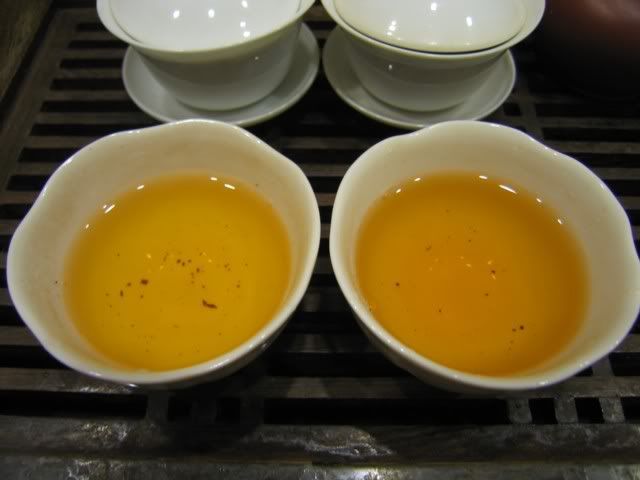
It’s always interesting when one tea outlasts the other. Flavours behaved similarly to the colour of the tea. The 2004 YQH is starting to taste a bit aged, and has a bit of that spicy aged taste to it — it’s obviously more aged than the Hou De sample I bought last year. One year difference, plus more Taiwan storage, probably did the trick there. The Fuxing, by comparison, tastes more green, with more fruity aromas and a generally lighter feel. It is always difficult to tell which tea in particular is giving you the throatiness, qi, and the coolness in the mouth when drinking two teas together, so I won’t try to comment there. The body of the two teas were similar. The general trajectory were also similar, and not a lot of roughness came out from either one. In fact, there wasn’t a huge divide separating the two. Except, of course… in the fact that the Fuxing simply lasted longer. The YQH started feeling a little weak by infusion 7 or 8, and when I pushed them late, it petered out.
That was also when a difference in throat feel was noticeable. The Fuxing went deeper, whereas the YQH didn’t. Of course, it could be because the tea died, but I don’t remember it being particularly deep last time I tried it, and I think this is just confirming that impression.
Even the wet leaves look somewhat similar, although the YQH has, relatively speaking, more easily unfurled leaves, while the Fuxing is rolled tighter and didn’t always unfurl. That, however, is not necessarily a bad thing at all. The jury’s still out on the rolling and the amount necessary. In fact, there are those who claim that some teas that unfurl too easily are actually not being rolled enough — that you need a bit more to release the juices and to break down membranes for aging to happen properly. I don’t know the answer to that, but it is food for thought.
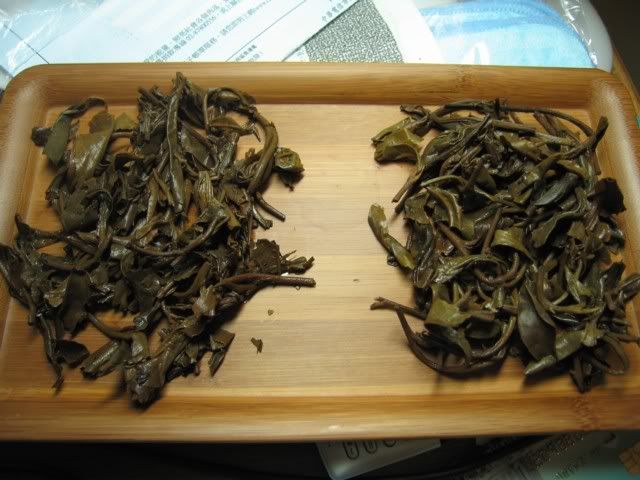
There was also this little thing I found…. is that a tea leaf, the small one?
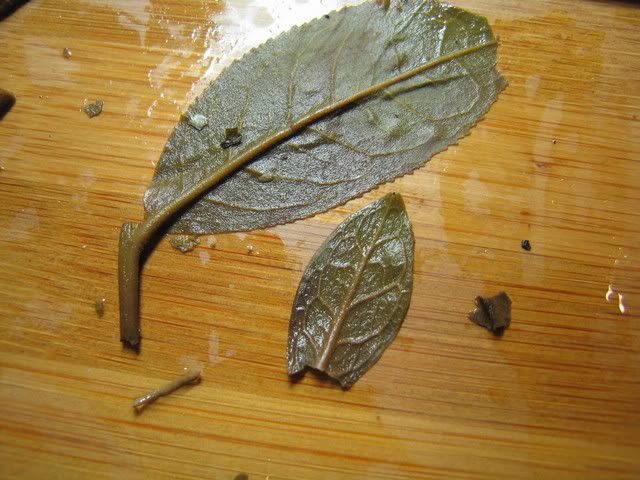
I can’t tell, but something about the way the veins are…. don’t look like any of the other tea leaves I’ve seen.

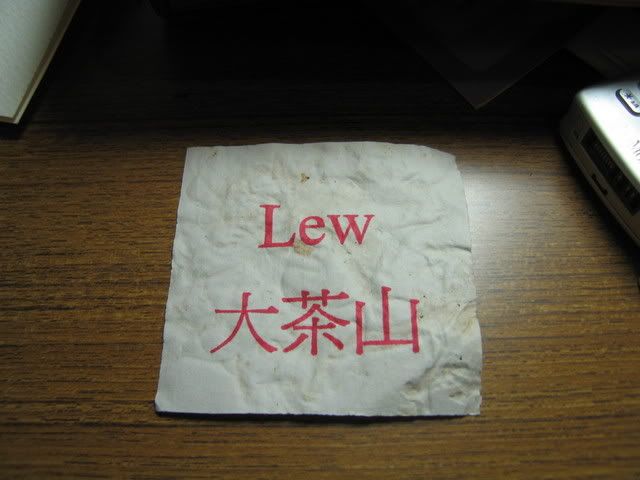
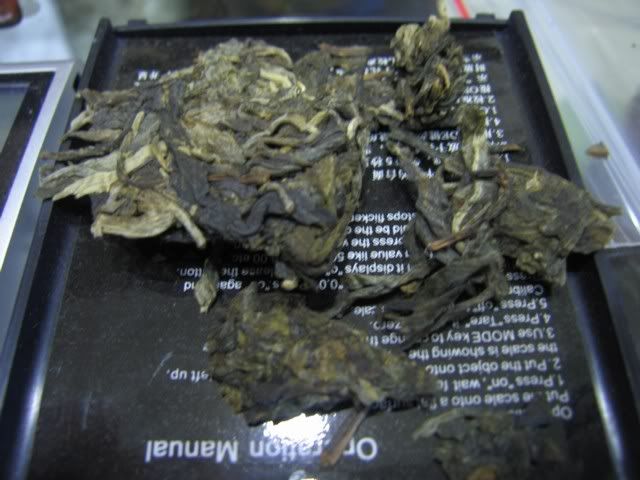
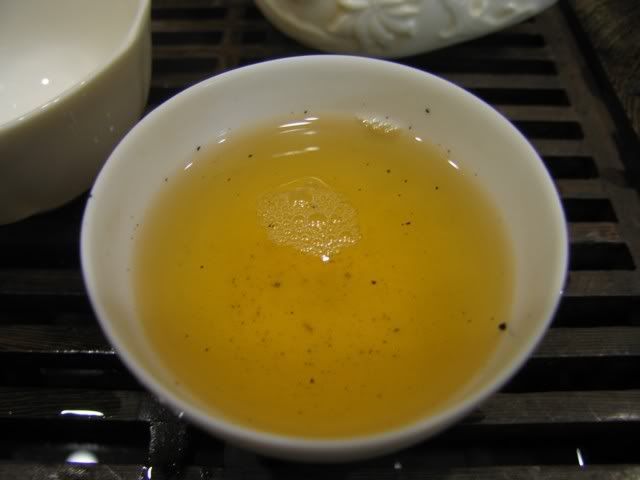
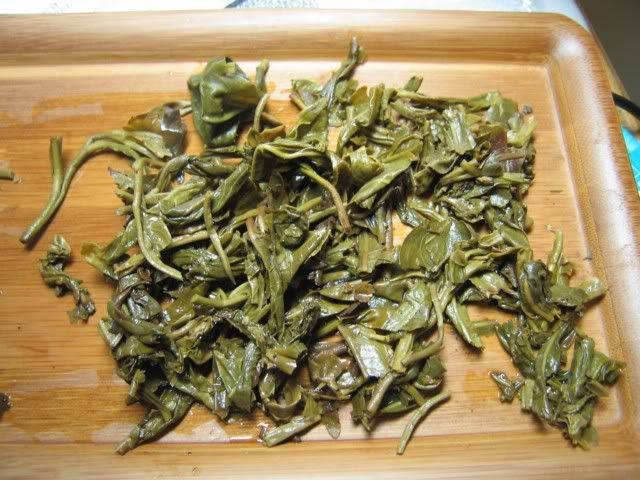
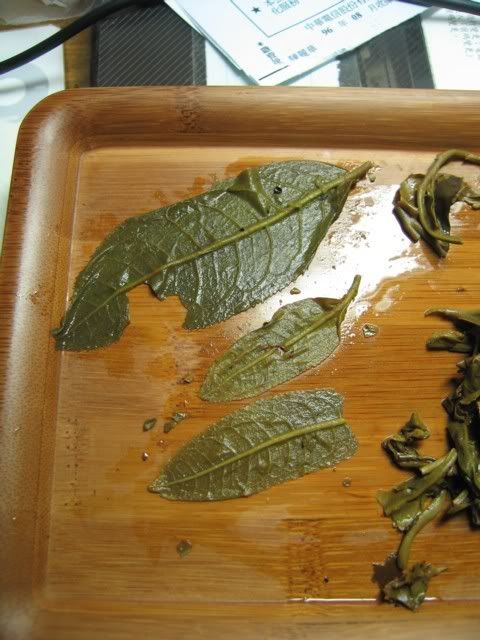
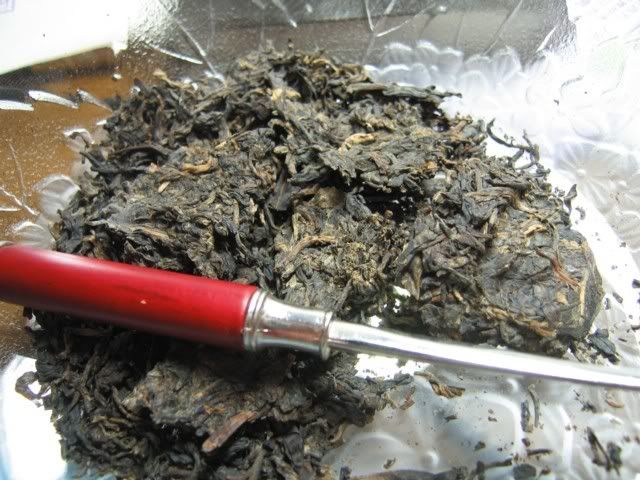
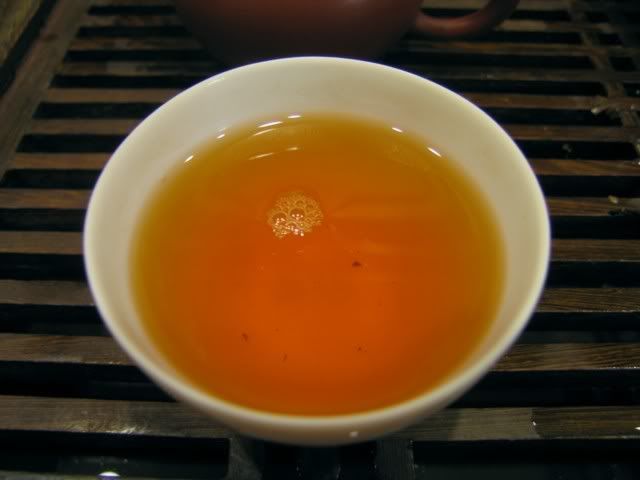
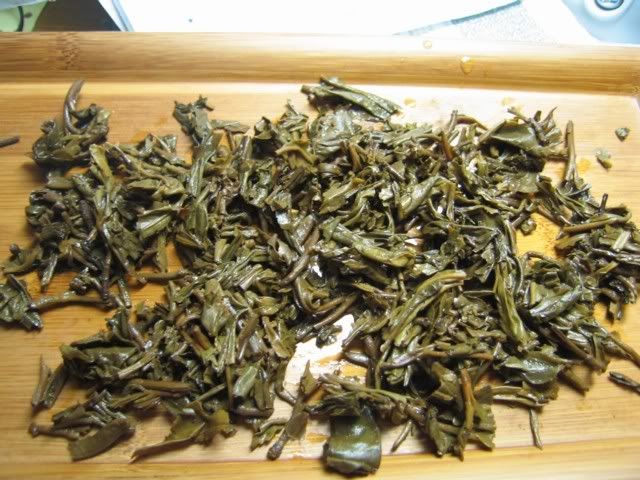






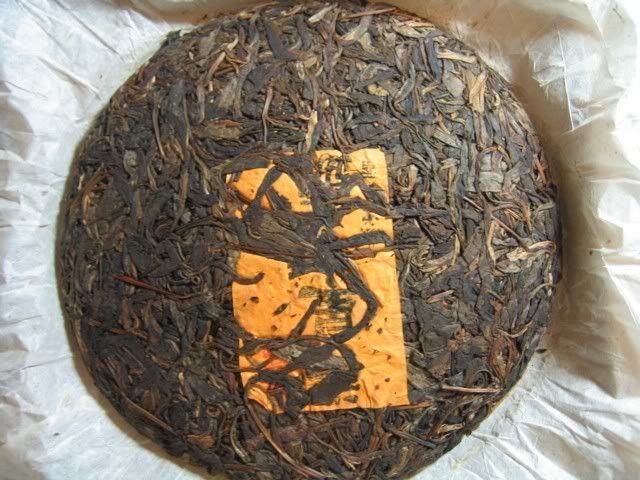






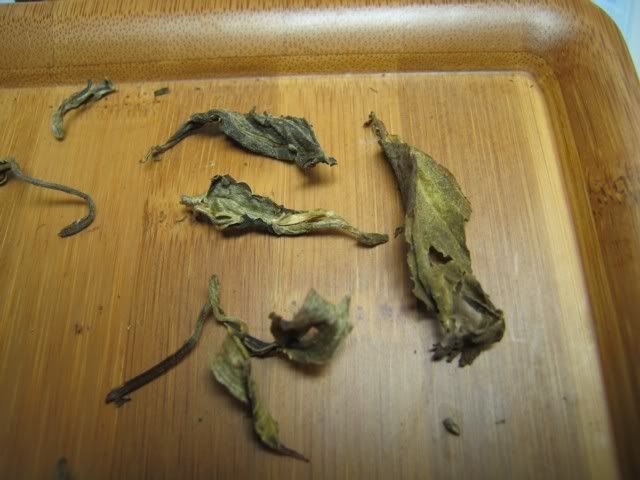


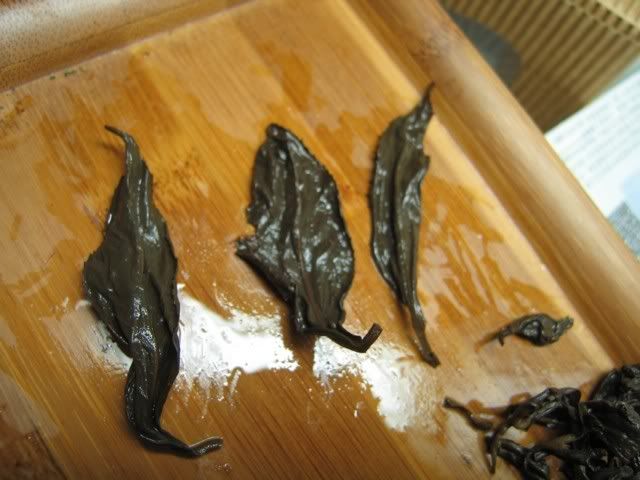








Well met observation, just wow. Using bad photos to guide purchases, people may end up buying teas they actually don't…